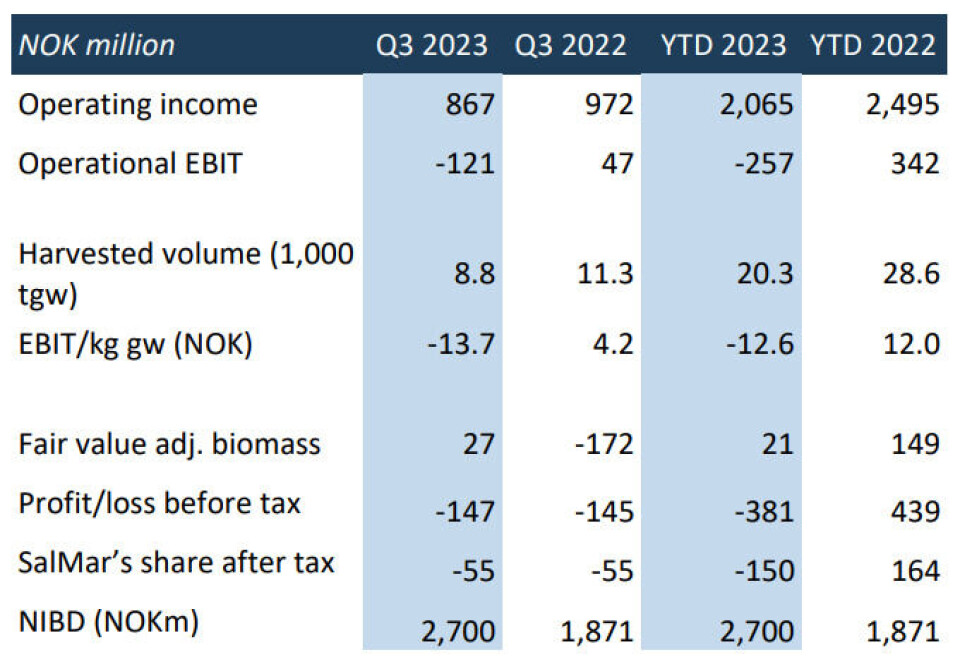
Scottish Sea Farms made operating loss of £8.8m in Q3
Salmon producer reduces 2023 harvest volume guidance for second time to optimise performance
Scottish Sea Farms made an operating loss of NOK -121 million (£8.8m) in the third quarter of this year, taking the salmon farmer’s operating loss for the first nine months of 2023 to NOK -257m, co-owner SalMar revealed in its Q3 2023 report today. Biological challenges continued from Q2, when SSF made an operating loss of £10.6m.
By comparison, in the first nine months of last year SSF had made an operating profit of NOK 342m, including NOK 47m in Q3.
“The weak results (for Q3 2023) are due to continued harvest of biologically challenged sites affecting average harvest weight, cost base and price achievement. In third quarter costs related to biological challenges accounted for £13.1 million (£1.50 per kilo),” wrote SalMar, which shares 50-50 ownership of SSF with fellow Norwegian salmon farmer Lerøy Seafood Group.

In August, SSF cut its 2023 harvest volume estimate from 37,000 gutted weight tonnes to 27,000 gwt in the wake of an “extremely challenging” second quarter and has now reduced that to 25,000 gwt to optimise biological performance.
37,000 gwt next year
But SalMar reported that there is an improved biological situation for generations to be harvested in 2024, when SSF expects to harvest 37,000 gwt.
SSF harvested 8,800 gwt in Q3, compared to 11,300 gwt in the same period last year. Revenue was NOK 867m (Q3 2022: NOK 972m), and EBIT per kilo was NOK -13.7 (NOK 4.2).
SSF is not the only Scottish salmon farmer to reduce harvest guidance after problems with challenges such as sea lice, amoebic gill disease, and micro jellyfish were exacerbated by warmer sea temperatures this year.
Mowi yesterday said that it had reduced its 2023 harvest estimate for Scotland from 64,000 gwt to 62,000 gwt.
And on Tuesday, Bakkafrost – which had already cut its estimate from 30,000 gwt to around 24,000 gwt – said it was making a further reduction in guidance to 20,000 gwt due to a strategic decision to leave fish in the water in the current quarter to gain weight and value.

























































